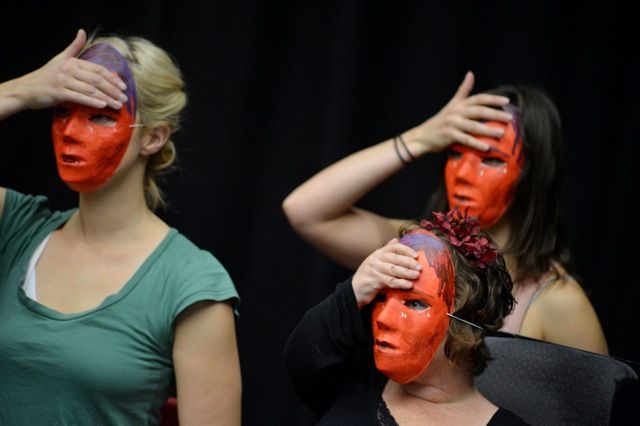What do you see? By Karen Wood.
06/05/14
Present in our explorations in the project research, is a clear indication that the critic’s voice is not loud and not critical enough when referencing the aesthetic and quality of disabled dance. However, not just in the case of critics but for audience members of disabled dance, societal influences may have affected the way we feel we are allowed to react to disabled dance, and whether we are adhering to the ‘PC’ rules so adamantly enforced upon us.
It was interesting to read a recent article by Bella Todd about the Creative Minds conference held in Brighton in March. ArtsProfessional, Issue273. Todd noted the absence of critics from this conference and she acknowledges that we need critical voices in the arts for artists to improve and progress their work. The debate is continuing here: CreativeMinds
There are some unhelpful labels placed in the work, which inevitably may skew our view. Why do we feel we need to label the work as ‘inclusive’? Why can it not be seen as artistic work in its own right and compared to, if this is what is necessary, mainstream performance? Where/who are the obstacles?
There is a call up on us to alter our narrow perception of ‘good’ art and not see disabled dance as therapeutic but as contributing to our current dance ecology. In the current funding economy, this is a time where arts organisations, artists, policy makers, audience members etc need to pull together and not place further divides in the art form. The Invisible Difference project research will bring these groups of people together to question what they ‘see’.
It was interesting to read a recent article by Bella Todd about the Creative Minds conference held in Brighton in March. ArtsProfessional, Issue273. Todd noted the absence of critics from this conference and she acknowledges that we need critical voices in the arts for artists to improve and progress their work. The debate is continuing here: CreativeMinds
There are some unhelpful labels placed in the work, which inevitably may skew our view. Why do we feel we need to label the work as ‘inclusive’? Why can it not be seen as artistic work in its own right and compared to, if this is what is necessary, mainstream performance? Where/who are the obstacles?
There is a call up on us to alter our narrow perception of ‘good’ art and not see disabled dance as therapeutic but as contributing to our current dance ecology. In the current funding economy, this is a time where arts organisations, artists, policy makers, audience members etc need to pull together and not place further divides in the art form. The Invisible Difference project research will bring these groups of people together to question what they ‘see’.
comments powered by Disqus

